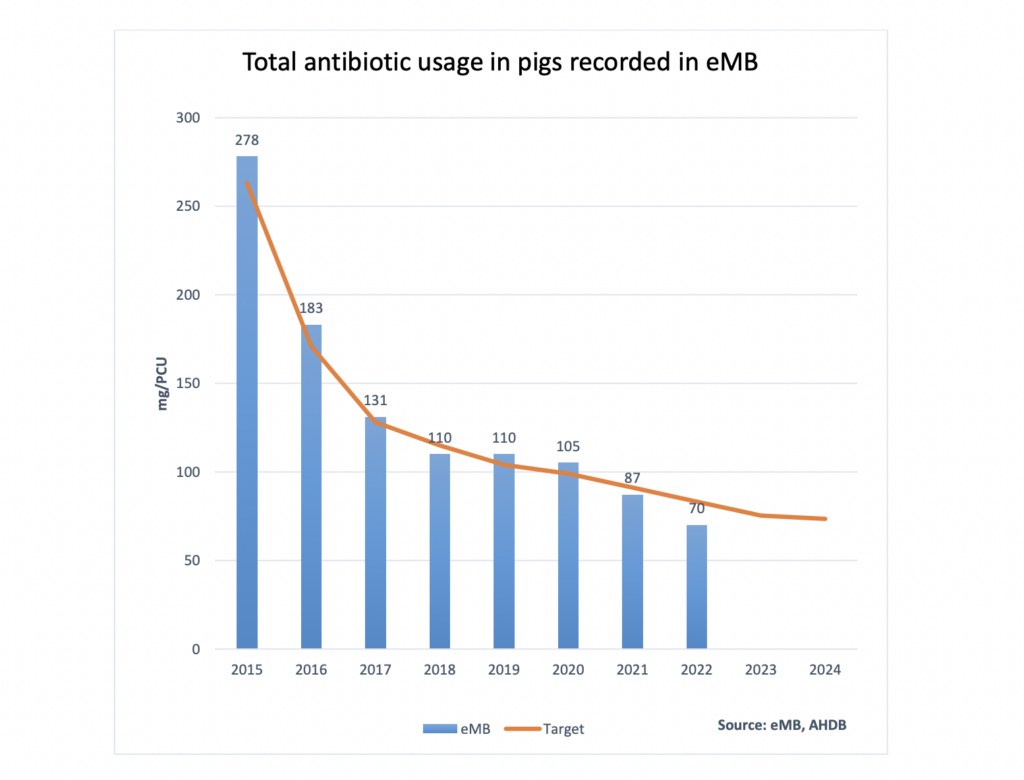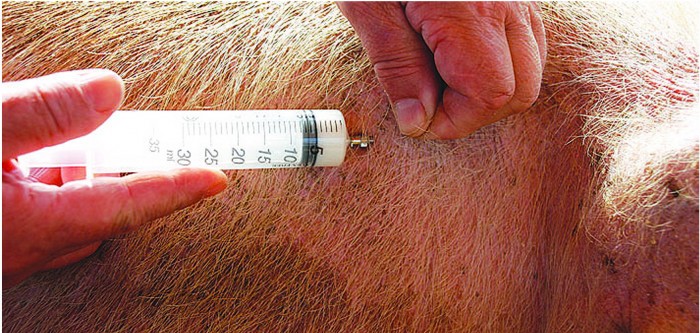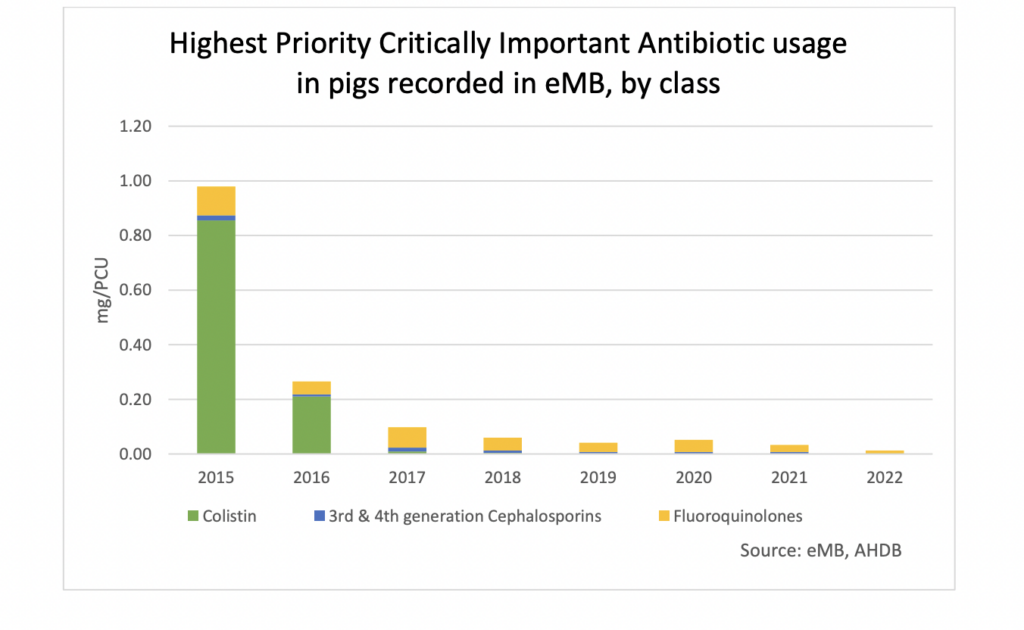The UK pig sector has undertaken another huge step forward in its ongoing drive to reduce antibiotic usage, recording a further 20% reduction in 2022.
However, while the latest figures have been widely hailed as a significant achievement for the industry, warnings have been issued over the impact on antibiotic usage over the next few years as supplies of zinc oxide are exhausted.
Antibiotic use in 2022 stood at 70mg/PCU, a significant improvement on the 2021 figure of 87mg/PCU in 2021, according to data collected by AHDB using the electronic Medicine Book (eMB), representing approximately 95% of pigs slaughtered in the UK.
 The latest drop in usage brings the total reduction since 2015 to 75% from a baseline of 278mg/PCU, highlighting the collaborative efforts of farmers, veterinarians, and stakeholders in minimising antibiotic use while promoting the health and welfare of pigs, AHDB said.
The latest drop in usage brings the total reduction since 2015 to 75% from a baseline of 278mg/PCU, highlighting the collaborative efforts of farmers, veterinarians, and stakeholders in minimising antibiotic use while promoting the health and welfare of pigs, AHDB said.
It also means the UK pig industry has already surpassing its current target of a 30% reduction in total antibiotic use between 2020 and 2024 set by the RUMA Targets Task Force (TTF).
The use of highest priority critically important antibiotics remains at a very low level, falling from 0.033 mg/PCU in 2021 to just 0.013 mg/PCU in 2022. No Colistin use was reported in pigs in 2022.
Significant reduction
Grace Webster, vet, and chair of the Pig Health & Welfare Council Antimicrobial Use Subgroup said: “This year’s significant reduction in antibiotic use on the UK’s pig farms takes the sector below the TTF2 target and in part, reflects the extended use of Zinc Oxide manufactured before the withdrawal of its marketing authorisation which the VMD authorised up to the end of the Shelf Life of that product.
“This has avoided an anticipated rise in antibiotic use to treat Post Weaning Diarrhoea in 2022 but, as supplies run out in the coming months, this may still be an issue that vets and pig producers are yet to face.”
NPA chair and AHDB pork sector council member, Robert Mutimer, added: “This data highlights the impressive collaborative efforts made by British pig producers and vets to reducing the use of antibiotics. Given all the well-known and difficult issues facing farmers, it is quite astounding that the goal has been exceeded.”
AHDB Head of Animal Health & Welfare, Dr Mandy Nevel, said: “Farmers and vets should be extremely proud of the work they have done to demonstrate a responsible approach to antibiotic use. The extensive data set collated over the last eight years has provided robust evidence of progress and has helped vets and farmers work collaboratively to make changes on farm and monitor that progress.
“The eMB was an industry initiative facilitated by the Pig Health and Welfare Council and over the last eight years, champions of the system, both farmers and vets, have led the industry on the road to responsible antibiotic use. It is wonderful to see what the industry collective can and has achieved.”
Quarterly data submissions to the eMB are in accordance with Red Tractor and QMS requirements. AHDB analyses the aggregated data and shares it with key stakeholders including the Pig Veterinary Society, National Pig Association, Pig Health and Welfare Council, RUMA, Veterinary Medicines Directorate. This collaboration provides a comprehensive overview of antibiotic use in the sector, enabling the industry to identify opportunities for optimising individual antibiotic usage.





